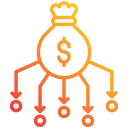The Pros: Clarity, Control, and Confidence
Seeing a rolling three-month average for dining, transport, and digital subscriptions reveals your real baseline. With visibility, you stop fighting surprises and start choosing trade-offs deliberately, without guilt or guesswork clouding decisions.
The Pros: Clarity, Control, and Confidence
Numbers lower the temperature of urgent choices. Whether evaluating a sale, upgrading equipment, or postponing travel, data frames the decision with facts, not fear. You get fewer impulse buys and more intentional, satisfying outcomes.
The Pros: Clarity, Control, and Confidence
Track a sinking fund for vacations or an emergency cushion with simple charts. Watching the line move builds momentum. Celebrate small wins, share your milestone in the comments, and keep the motivation loop alive.
The Pros: Clarity, Control, and Confidence
Lorem ipsum dolor sit amet, consectetur adipiscing elit. Ut elit tellus, luctus nec ullamcorper mattis, pulvinar dapibus leo.

